E. Kristin Anderson's Blog, page 26
March 26, 2014
Review: THE GOSPEL OF WITNER by Brendan Kiely
Some books break your heart. Some books wreck you.
THE GOSPEL OF WINTER by Brendan Kiely is one of those books. There’s so much going on here. A divorce. A troubled rich kid with too much time and money and speed on his hands. Questions about sexuality. And the topic that still haunts the Catholic church: priests getting a little too close to altar boys.
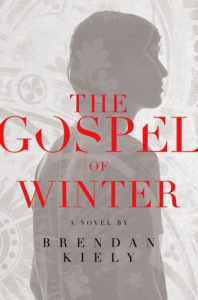
Margaret K. McElderry Books, January 2014.
Taking place just months after 9/11, and set in small-town Connecticut, THE GOSPEL OF WINTER explores what it means to be a teen on the edge. On the edge of adulthood. on the edge of failure. On the edge of social circles. Aidan is struggling with so much, and it doesn’t seem like the people around him are really noticing. His mother is wrapped up in image, and he doesn’t really have friends to speak of. Not until, at his mom’s annual holiday bash, he sneaks off with a couple school mates (and parents’ friends’ kids) to drink and get high. Soon, he has a new band of cohorts. And he’s falling in love. Sort of. And all the secrets he’s been keeping about the well-loved local priest begin bubbling to the surface. As Aidan’s life unravels, he is finding himself more and more in need of support. And he has to learn to lean on people. The right people. More than ever.
Told in lyrical prose, with deep sensitivity for the tough topics that THE GOSPEL OF WINTER approaches, this is a novel that stands up there next to books by Laurie Halse Anderson and Lauren Myracle. It’s a book that will bring you to tears, and, at the same time, is page-turningly enjoyable. Aidan is a character you will not soon forget. And I anticipate awards in Brendan Kiely‘s future.





March 25, 2014
Review: 16 THINGS I THOUGHT WERE TRUE by Janet Gurtler
Janet Gurtler knows how to tug at the heart strings. This is a known fact. She writes characters who feel real, and she writes about issues that are tough and important. In her new book, 16 THINGS I THOUGHT WERE TRUE, Twitter-addicted Morgan is forced to confront such a plethora of mishaps that it would have been easy for this book to come off as contrived and overdone. But this novel is complex and beautiful and exciting and even a little romantic.
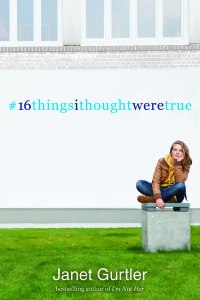
Sourcebooks Fire, March 2014.
Things start to go awry before the novel even starts, when a video of Morgan hits the internet. And it’s a video that she wishes wasn’t there. Dumped by her bestie, her only real friends are on Twitter. And at work at a theme park, aside from the weird girl Amy, most of her coworkers ignore her at best, but some of them aren’t afraid to laugh right to her face. She’s pretty sure even her boss Adam, a fellow high school senior, is also a big fat jerk, until a family emergency hits, and Adam drives her to the hospital. It’s the beginning of a domino effect that leads to 1. Morgan’s mom confessing that she knows more about Morgan’s dad than she would ever admit to before, 2. Some very unlikely friendships, and 3. A road trip of self-discovery that might just push Morgan over the edge.
16 THINGS I THOUGHT WERE TRUE is a serious page-turner, with more surprises and drama with every chapter. Grab a box of tissues and curl up with Janet Gurtler‘s latest. You won’t regret it.





March 24, 2014
Review: NO ONE ELSE CAN HAVE YOU by Kathleen Hale
I often tell aspiring writers that you can’t teach voice. You have it or you don’t, and hopefully if you need it you’ll find it. Kathleen Hale has it. And in her debut novel NO ONE ELSE CAN HAVE YOU, the protagonist Kippy Bushman is a voice to be reckoned with.
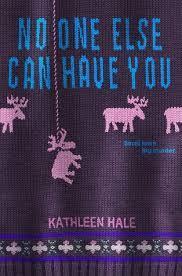
HarperTeen, January 2014.
Set in rural (and I mean rural) Wisconsin, Kippy is the girl who doesn’t fit in and doesn’t really know how to fit in. When her best friend is brutally murdered, the town — filled with happy-faced, nosy neighbors and cops who say things like “you betcha!” at the end of every sentence — is certain they have their guy after the Sherriff arrests a popular jock. Given, this guy had been known to a) have his way with girls and b) vandalize things, but Kippy knows it wasn’t him. She knows the real killer is out there. And no matter how much the Sherriff — and her dad, and her neighbor Ralph — try to keep her from investigating, nothing can stop her. Not even a squad of bible-thumping cheerleaders.
NO ONE ELSE CAN HAVE YOU is a black comedy, a murder mystery, a laugh riot, and also a touching story of friendship. Part Pretty Little Liars, part Veronica Mars, but 100% your new favorite girl Kippy, NO ONE ELSE CAN HAVE YOU is a must-read and definitely a contender for fancy awards. (Ahem, hello Edgar Committee!)





March 23, 2014
Text is the New Black: The new face (or lackthereof) of YA book covers
So this is one of my favorite books of last year:
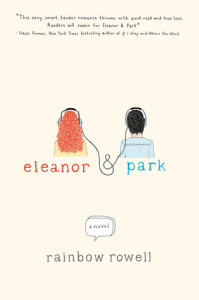
St. Martin’s Griffin, February 2013.
When I first held ELEANOR & PARK by Rainbow Rowell in my hands, as an ARC from St. Martin’s, I remember thinking how simple and different this cover was. Illustrated, a limited palette of colors, and with very unadorned text. I liked it. But I didn’t see this coming:
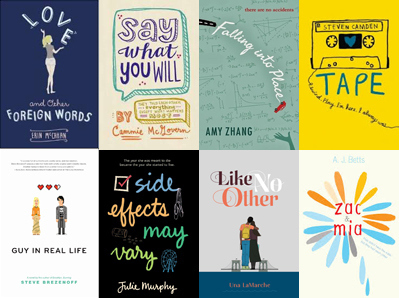
Can you see the trend?
Certainly this isn’t the first time a trend has swept cover design. Publishing is an industry that, dare I say, depends on trends. But what’s cool about this trend is that it’s taking books that previously looked like this:
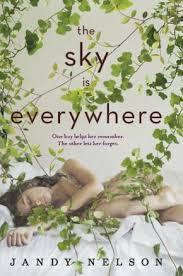
Speak, Paperback Edition, March 2011.
And making them look like this:
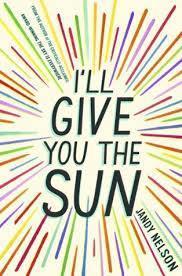
Dial, September 2014.
And where the cover for Jandy Nelson‘s previous novel SCREAMS girly romance book, the cover for her forthcoming book, I’LL GIVE YOU THE SUN, is completely gender neutral. Jandy Nelson writes beautiful literary fiction, which would appeal to fans of John Green. But with a cover like the above, it might be hard to entice boy readers. One thing I love about this trend — the trend of simple, more graphic/text-based covers — is that it’s pushing designers toward a marketing style that is less gender-based.
But, you might ask, why is gender-based marketing so bad? Well, to put it simply, people are way more complicated than girls like Barbies and boys like Hotwheels (thanks, McDonald’s, for still using this campaign with your girl/boy happymeals). And to put it less simply, when we put people in boxes like “girlie” or “boyish” it constricts the way we view each other and even the way we view ourselves. It’s bad for everyone. You, me, them, our culture…and on and on. If the story in a book would appeal to a wide variety of readers, the cover should reflect that. The example I often come back to is UGLIES by Scott Westerfeld, which is VERY gender neutral in the story, but has a pretty girl on the cover (or at least it used to, it’s had a few redesigns, which, IMO, still target female readers).
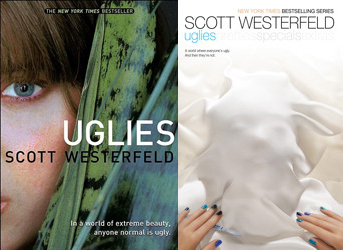
Simon Pulse, June 2005/Simon Pulse, Reissue, May 2011.
I know from talking to youth librarians that guy readers are reluctant to read these unless they are covered in brown paper bag covers. And, yes, many of amazing librarians use tactics like this to neutralize awesome books for shy readers. But what if that didn’t have to be a thing? With this text and illustration (vs photos and models) trend, we’re seeing some fantastic gender-non-specific covers. Here are some examples:
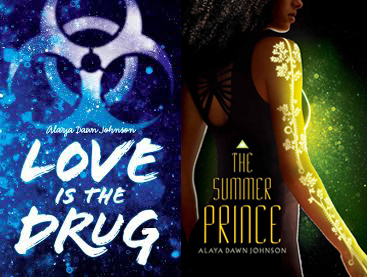
Arthur A. Levine September 2014/Arthur A. Levine March 2013.
Both of these books are by Alaya Dawn Johnson, a female author of literary science fiction. (For the record, I read and enjoyed The Summer Prince.) From the cover of THE SUMMER PRINCE, you can assume the following: the main character is a girl. You might assume: this books is for girls, and about girls, and, in correlation with the title, about princes. Kudos, you CAN tell that this is about a brown girl, not a white girl, but if you’re a teen guy reader (or, heck, maybe even a grown up guy reader), you might think this book isn’t for you. The thing is, THE SUMMER PRINCE is actually a book that, thematically, is very much about defying gender roles. It’s also a thrilling futuristic sci fi read taking place in a futuristic Brazil. But you might not get that if you stop at the (albeit beautiful) cover with a girl on it. The cover from LOVE IS THE DRUG screams sci fi thriller with a possible medical bent. With nobody gender-specific on the cover, there’s a greater chance that a guy might pick this up (if he can get past the word “love” in the title). I know I’m psyched to read this title, because I love Johnson’s other work. But maybe other readers will be psyched to read this title because the cover is powerful while being moderately neutral in regard to gender and ethnicity.
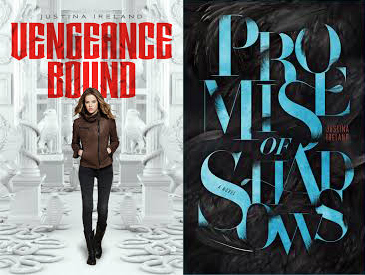
Simon & Schuster Books for Young Readers, March 2013/Simon & Schuster Books for Young Readers, March 2014
Again, here we have two covers of novels by a single female author. Justina Ireland‘s first novel, VENGEANCE BOUND, features a fair-skinned, traditionally pretty, slim girl. It looks like a thriller for female readers. But with the comparisons to Dexter that this book has garnered, don’t you think guy readers would dig it, too? Ireland’s new book, PROMISE OF SHADOWS, however, doesn’t have a character on the cover at all. Using primarily text as the focus point, the book looks mysterious, dark and magical. No hints at an ethnic or gender-based audience are given.
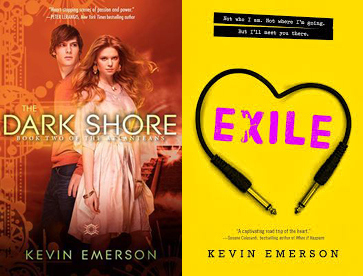
Katherine Tegen Books, May 2013/Katherine Tegen Books April 2014.
Here, we have two books by the same authors. THE DARK SHORE, while showing both a girl and a guy on the cover, is probably more attractive to female readers, with a paranormal romance vibe. The bold colors, simple typography and cable on the cover of EXILE make Kevin Emerson‘s newest book — the design of which throws back to the highly popular NICK AND NORAH’S INFINITE PLAYLIST — infinitely more neutral.
I think we can credit a lot of these covers to the success of ELEANOR AND PARK, and even throw back to THE FAULT IN OUR STARS, which is now a couple years old. Both of these books were successful in their own right, because they are fantastic books by fantastic authors. But both garnered a lot of readership outside of the target demographics, garnering rave reviews and massive outside of YA circles. These authors also share readership with Stephanie Perkins, author of ANNA AND THE FRENCH KISS, LOLA AND THE BOY NEXT DOOR, and the forthcoming ISLA AND THE HAPPILY EVER AFTER. Perkins has seen her books rebranded from photo covers to text/design-based covers, which you can see in the comparison between the hardcover and paperback of both ANNA and LOLA (seen below):
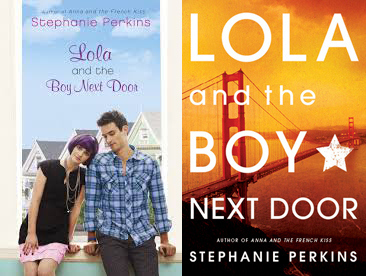
Dutton Juvenile, September 2011/Speak, Paperback Edition, July 2013.
While the initial cover very much reflects Perkins’ whimsical style, the paperback has a more universal appeal. Which is fantastic, because she’s a fantastic writer whose books are not only romantic but also literary and smart and socially aware. The more people who read her books the better.
And it could be argued that even feminine covers have wider appeal when they feature type/illustration rather than photos and models.
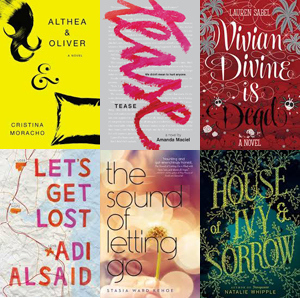
These covers might betray gender, but they don’t convey beauty standards.
What’s nice about these covers, especially in the wake of articles like this one about YA heroines all being frail and tiny and slender and beautiful, is that there’s nothing about any of these covers that reveals a single thing about the protagonists’ looks. We’ve had a plague of pretty-girls-in-dresses covers in recent years. Readers have complained that their favorite character would never wear a dress at all, let alone the one she’s wearing on her book cover. Readers have complained that their favorite character is muscular or thick or even chubby, but is portrayed on the cover as svelte. Which of course leads to the problem of teen body image and what we’re portraying with YA covers that feature skinny, traditionally pretty, and (usually) white girls. Nobody will look at the above covers and think, “that girl doesn’t look like me.” Because there’s no girl to look at. But, with typography and design, these covers may very well communicate the personality of the story and the characters within. A reader can definitely connect with that.
And you know what else is cool about these covers? They look a lot like some great adult literary covers, which I suspect was part of the intent when THE FAULT IN OUR STARS was designed. A few comparisons:

Not exactly the same, but you can see similar design strategies here. (All but Green’s novel are adult literary fiction.)
Which is perhaps what has lead to covers that look like this, in YA:
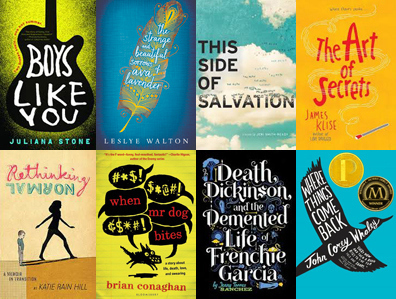
These books would look at home in the adult section.
…which I think is especially cool because it speaks to the diversity of work within YA, and within YA contemporary. I’ve always said that just like in adult fiction, you have candy bar books and meat and potatoes books, and it looks like they’re trying to market YA this way as well. (Note: I enjoy both candy bar books and meat and potatoes books. So, this isn’t at all a slight to one side or the other. But we can all admit that James Patterson is marketed differently from Haruki Murakami, for example.) Which, I think, is going to show further respect for YA readers, who, like adult readers, have a wide range of tastes and often enjoy more sophisticated offerings. (Which, of course, is all interesting in comparison to the opinions of some of the writers on the Internet who keep crying out that books X, Y, and Z are “too good” to be YA. I wonder what they’d think of these titles? And does the art have an impact on these sorts of opinions?)
All in all, I’m excited to see where this trend goes. And I’m interested in thinking about what some of our favorite YA novels would look like with illustrated and text-based covers rather than photos and models. If you have the inclination to re-imagine a book, use your illustrative skills and show me! Who knows, there might be prizes available for my favorites.
PS, here are some links to the books/authors used in the combo graphics, which I didn’t name specifically above:
LOVE, AND OTHER FOREIGN WORDS by Erin McCahan • SAY WHAT YOU WILL by Cammie McGovern • FALLING INTO PLACE by Amy Zhang • TAPE by Steven Camden • GUY IN REAL LIFE by Steve Brezenoff • SIDE EFFECTS MAY VARY by Julie Murphy • LIKE NO OTHER by Una LaMarche • ZAC + MIA by A.J. Betts • ALTHEA & OLIVER by Cristina Moracho • TEASE by Amanda Maciel • VIVIAN DIVINE IS DEAD by Lauren Sabel • LET’S GET LOST by Adi Alsaid • THE SOUND OF LETTING GO by Stasia Ward Kehoe • HOUSE OF IVY AND SORROW by Natalie Whipple • BOYS LIKE YOU by Juliana Stone • THE STRANGE AND BEAUTIFUL SORROWS OF AVA LAVENDER by Leslye Walton • THIS SIDE OF SALVATION by Jeri Smith-Ready • THE ART OF SECRETS by James Klise • RETHINKING NORMAL by Katie Rain Hill • WHEN MR. DOG BITES by Brian Conaghan • DEATH, DICKINSON, AND THE DEMENTED LIFE OF FRENCHIE GARCIA by Jenny Torres Sanchez • WHERE THINGS COME BACK by John Corey Whaley





March 21, 2014
Review: AND WE STAY by Jenny Hubbard
Violence in schools continues to be an issue that plagues our country and it’s young people. In AND WE STAY, Jenny Hubbard takes on this heavy topic, telling the story of Emily Beam, a teen who survived the terrifying suicide of her boyfriend.
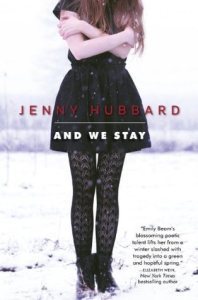
Delacorte Press, January 2014.
Entering the Amherst School for Girls halfway through the school year, Emily Beam is immediately confronted with culture shock and questions. She’s not up to snuff on fashion trends, she hasn’t had time to figure out the social rituals of boarding school, she doesn’t have the kind of money that her classmates have, and, on top of all this, there are the rumors that come with being the new girl. The new girl who shows up in January of junior year. Emily isn’t eager to talk about what happened in the library that day, but she is eager to write. Even if she doesn’t share it right away. Emily has always felt close to Emily Dickinson, and now in Emily D.’s hometown, she finds herself writing more poems than ever, occasionally sneaking off campus to visit the Emily Dickinson house. But as much as she tries to keep her world small, soon Emily Beam grows closer to her room mate and the other girls at ASG, and she finds she has choices to make.
Jenny Hubbard‘s writing is elegant and succinct, playing well alongside the wintery atmosphere of New England winter. The author’s choice to set the story in 1995 gives AND WE STAY an extra sense of remoteness: no cell phones, no Google, and no email make for an almost claustrophobic feeling in both the small communities of Emily Beam’s home town and the all-girls boarding school. This is a beautiful, important book, and one that I hope will find the readers who need it.





March 20, 2014
Review: WHITE LIKE MILK, RED LIKE BLOOD by Alessandro D’Avenia
The promotional copy for WHITE LIKE MILK, RED LIKE BLOOD aptly compares this story to THE FAULT IN OUR STARS. And while, stylistically, Alessandro D’Avenia, bears little resemblance to John Green, the voice of his protagonist resonates in the same way that John Green’s characters do. This is a book that has already found mass appeal in Europe, and I’m excited that it’s been translated into English and distributed in the US.
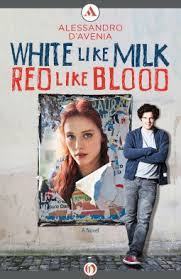
Mondadori/Open Road, December 2013.
WHITE LIKE MILK, RED LIKE BLOOD is the story of a high schooler in love. Leo hasn’t ever really talked to Beatrice, but he’s infatuated by her beauty. He adores her. And he is determined to get her to fall for him. But when she stops showing up to school, Leo realizes something is wrong. And it’s not long before it’s revealed that the beautiful redhead he’s devoted to is deathly ill. She has cancer, and her chances aren’t great.
With a fabulous supporting cast — including a wonderful teacher, an adoring female best friend, and a group of soccer buddies — WHITE LIKE MILK, RED LIKE BLOOD is the kind of book that throws back to the YA of the 80s, with touches of Judy Blume and John Hughes. But Alessandro D’Avenia has a new voice in his own right, and I’m looking forward to seeing what he’ll have to offer in years to come.





March 16, 2014
More Good News! More Poems! More Bumps in the Night!
I’m so excited to share some more exciting news on the poetry front. A little while ago I shared that Finishing Line Press would be publishing my chapbook A JAB OF DEEP URGENCY, a collection of found poems which I mined from Jennifer Egan’s A VISIT FROM THE GOON SQUAD.
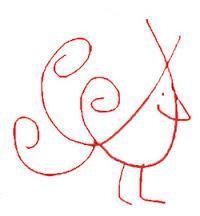
Red Bird Chapbooks.
What I didn’t tell you is that it’s the second of two chapbooks I’ve sold this year. The ink has just dried, per se, on a deal with Red Bird Chapbooks for A GUIDE FOR THE PRACTICAL ABDUCTEE, which contains poems about the supernatural, the cryptozoological, and the speculative. It contains poems previously published in [PANK], Asimov’s Science Fiction, Going Down Swinging, and Cordite, as well as lots of brand new, never before seen poems.
I am so excited about this. Red Bird has given a home to a little chapbook that I never thought would make it. I wasn’t sure there was a market for speculative poetry. But, so far, almost everyone I’ve talked to has been intrigued. Including, holy crap, Loren Coleman, who provided this blurb:
Cryptozoology poetry found its way to me, thanks to E. Kristin Anderson. I now know the study of Sasquatch, Nessie and Champ has joined the realm of lonely hearts, missed dreams, and love lost. It was bound to happen, I’m happy to say. Thank you, Kristin.
– Loren Coleman, director, International Cryptozoology Museum, and author of over 30 books, including Cryptozoology A to Z.
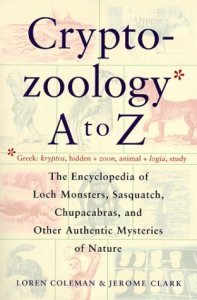
Simon & Schuster, August 1999.
Yeah, I died. CRYPTOZOOLOGY A TO Z has been on my night stand for the last four years, fueling so much of my writing. So…holy crap, right?!
There are some other amazing authors who have provided gracious praise for this little chapbook, and I am so grateful, and I can’t wait to share their lovely words as well.
I’ll keep everyone up to date as news unfolds. As soon as we have a cover, release date, ordering info, etc, I’ll be posting it here as well as on my social media. It’s the Year of the Poem for me, and I’m happy to make it so.
I hope while you’re waiting for my chapbooks to come out that you’ll check out some of the other fine books published by Finishing Line Press and Red Bird Chapbooks. Or, hey, just go read some poems. Lit mags. Collections. Anthologies. Read all the poems!
…and stay tuned for lots of guest posts from awesome poets…which might be a good place to start if you’re up for reading all the poems. April is National Poetry Month! Huzzah!





March 9, 2014
International Women’s Week: Guest Post from Brenda Cooper: Women Succeed in Science Fiction
In 1975, I turned fifteen. The Nebula Award for best novel went to Joe Haldeman for his excellent book, THE FOREVER WAR. Everyone who won a Nebula in any category that year was male. But there was a bright pink light. Ursula K. LeGuin won the Hugo for THE DISPOSSESSED. She was the only woman on the final ballot, and she aced it. By then, I already knew I wanted to be a science fiction writer. Most of my role models were men, but there were women. Ursula was one. C.J. Cherryh was another, and Vonda MacIntyre. But it’s also clear from any list about SF from the 1970’s that male authors outnumbered and outsold women in aggregate.

Harper & Row, May1974.
In the 1980’s Connie Willis, Kate Wilhelm, Lois McMaster Bujold, and Nancy Kress started showing up with awards, and some of them haven’t stepped off the award shortlists since then.
So fast-forward to now. The Nebula shortlist for awards that will be given out this year (for works published in 2013) has six women and two men in the novel category. The novella list is four women, one man, and a male/female collaboration. The novelette shortlist is an even split, and the short story shortlist has three female authors and two male authors on it. Six out of seven of the Andre Norton Award nominees for young adult fiction are female. The Hugo list isn’t out for this year, but the ballot across the four major categories for last year had seven women (after you deduct for multiple nominations) and seven men.
This tells me that if I were fifteen now, I wouldn’t even notice a gender split among SF writers. I might even think that there were a titch more women succeeding in the field than men.
There are still days when I personally feel like the hill remains a little steeper for women, and steeper yet for people of color or from other countries. But I’m a firm believer that making justice happen is far more interesting that carping about injustice. So I’d like to take a moment and celebrate some good in the world. The recent Kickstarter campaign “Women Destroy Science Fiction” set out to raise $5,000 in order to build a double-issue of the successful LightSpeed Magazine dedicated entirely to science fiction by women. They reached 2,801 backers and raised $53,136. That’s community support for strong women in our field. In fact, women will now destroy horror and fantasy as well as science fiction. Pretty fun! Thanks for this go to John Joseph Adams and Christie Yant, among many others. Legend has it that the idea started because some man somewhere said something like, “women are destroying science fiction.”
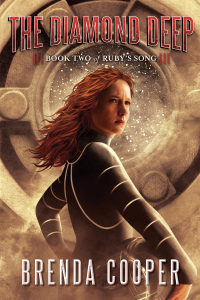
Pyr, October 2013.
Not really. But we are succeeding in the field.
I gew up to be a science fiction writer, just like I promised myself when I was fifteen. I do feel like it’s harder for me to get noticed and harder to sell books than it might be if I were a man. But not much. Because women like Ursula LeGuin and C.J. Cherryh broke the early ground and stood in as role models, I got to follow them and have an easier time. So thank you to all of the sisters who started the fight. Because of you, I have the opportunity to write a lot of science fiction and explore interesting new worlds.

Brenda Cooper.
Brenda Cooper has published fiction in Analog, Asimov’s, Strange Horizons, Nature, and in multiple anthologies. She is the author of the Endeavor award winner for 2008: THE SILVER SHIP AND THE SEA, and of the sequels, READING THE WIND and WINGS of CREATION. Brenda co-authored BUILDING HARLEQUIN’S MOON with Larry Niven.
Her most recent novels are THE CREATIVE FIRE and THE DIAMOND DEEP, from Pyr Books and edited by Lou Anders.
Brenda lives in Bellevue, Washington, with her partner Toni, Toni’s daughter Katie, two border collies, and a golden retriever. By day, she is the City of Kirkland’s CIO, and at night and in early morning hours, she’s a futurist and writer.





International Women’s Week: Guest Post from Sara Cassidy: The Story of the Single Parent
At 46, I am finally moving beyond the tizzy of self-doubt stirred up by enduring proscriptions about what I, as a woman, am supposed to do, think, and look like. As a white woman raised in a middle class family, I’ve had wide patches of ease, but like any woman my age have faced discrimination in the workplace, sexual harassment, and diminishment by the very language I speak. In my profession, I’ve been lucky for writers such as Alice Munro, Grace Paley and Sharon Olds who have forged a place for women on the page.
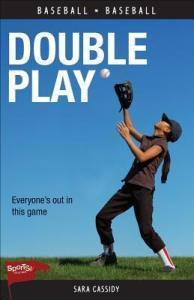
James Lorimer, September 2013.
My three children are 10, 12, and 14, which means the noughts are a blur in my memory, a decade of joy and deep engagement in the immediate. I remained as politically active as I could, but for several years, in the commotion of life with small children, the newscaster on the kitchen radio might as well have been reading a novel aloud to someone I had never met. In terms of proscriptions, motherhood was relatively easy: I chose the arguably anti-feminist attachment model, and though I received pained looks when I breastfed my four-year old in public, I learned that mothers of young children are generally tolerated (likely because they’re considered to occupied to smash the state – even as we coo anti-capitalist messages to our young ones!). Many nights, as the kids dozed in our shared bed, I tapped out articles to help pay the bills. As a feminist, I knew not to pit myself against other women: I supported and admired women, among them my three sisters, who had enrolled their children in daycare and developed strong careers.
Then, a sea change. After much personal crisis, my husband moved out. I clearly remember, on those first nights after he left the house, locking the front door, turning the deadbolt against the world in its darkness; the small task seemed extremely important and my act felt bold and transgressive. I had absorbed the idea that locking down a house in which children slept was a man’s job. Those first weeks as a single mother, I lay in bed with the phone nearby, sharply attentive to every small sound in the house. After all, my three children and I were terribly vulnerable. Weren’t we?
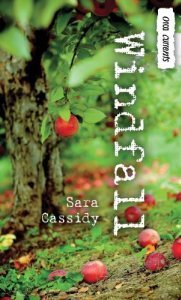
Orca Books, April 2011.
Yes, we were vulnerable. But not to thieves or kidnappers, at least not the kind that sneak through windows or defy locks with skeleton keys. The real thieves and kidnappers were the stereotypes that persisted in the media and governmental debates. Welfare mom! Unwed mother! I found that I was scorned, dismissed, pitied (in word if not deed), and that my children were assumed to be neglected and ultimately problematic (as for the strong scent of fear, I transmuted it into power: where there is fear, there is undefended territory – angels, too, rush in where fools fear to tread.). Close friends, complaining to me of their children’s new friends, have disparaged these children as having of “a single mom,” a shorthand explanation for bad behaviour and more. I say nothing, only steel myself against the silent, insidious accusations that can get through ribs. Sometimes my friends catch themselves: a young single mother, they’ll amend, or something equally offensive. They hope in their backpedalling to say not like you, you’re not that kind of, you aren’t even a….Keep on digging. I don’t need to say it here, but I will: Every mother parenting alone is unique. But some generalisations can be made: she is is very busy. She is likely financially stretched. She is proud, intelligent, funny, resourceful, loving, and hardworking.
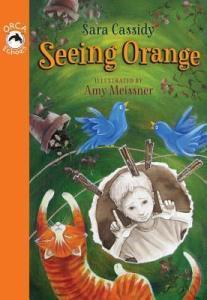
Orca Books, November 2012.
The work of Bronwen Wallace and Anne Lamott, even the old television show One Day At A Time or the current Gilmore Girls, demonstrate that single mothers are as complex as anyone else and that their relationships with their children are valid. But nothing prepared me for the joys of single parenting. No one ever said that being in a single parent family could actually benefit my children. My daughter and sons are old enough now to be home alone, but for years we travelled as a tribe. When one child had to be somewhere, we all went. We spent hours together in the car, in waiting rooms, and on the sidelines at sports games. We know the details of each other’s lives; we are in each other’s pockets. I have been careful not to overly confide in my children, not to share with them burdens that belong to adults, but my children know that resources are generally tight, and they which days they are particularly tight – which means they know how to budget and they know the difference between want and need. They will likely get jobs earlier than most kids and thus learn early the old work-life balance. They already know not to compare themselves to others. They are resourceful, humble, caring and thoughtful. It’s a provocative idea, but is it possible that the sons of single mothers are less likely to become misogynists?
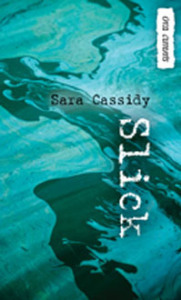
Orca Books, October 2010.
A review of my second book for youth, WINDFALL, by VOYA Magazine notes that the book allowed “a glimpse of a life seldom seen in current YA fiction: a Canadian sensibility, a successful single mother raising her children well…” The mother in WINDFALL, and in my books SLICK and SEEING ORANGE, which are about the same family, is indeed single, but she isn’t “successful”, at least not financially. She makes do, using an art history degree to assess artifacts for auction houses. I never suggest that she works full-time or has a large salary, or even that she is well regarded professionally. She just isna’t what we are told single parents are. She makes jokes, she loves her kids, she apparently pays the bills – she’s a regular person; is this what the reviewer considers successful? All writing is an uphill battle against cliché. It is probably impossible to write a realistic single mother without being subversive – by making her “successfully” human.
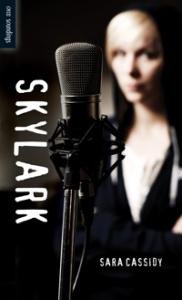
Orca Books, April 2014.
I didn’t mean to write about single mothers, but when I look at my books, there they are. In my novel, DOUBLE PLAY, a book essentially about gender and sports, two single mothers, who eventually marry, are presented as real, breathing women (OK, one’s a caricature of an anxious parent, nothing to do with being single). When they move in together, one of the children mourns the loss of closeness with her mother. In SKYLARK, my most recent YA novel, a mother and her two children survive a bad patch of poverty, living for several months in a Buick Skylark after an injury makes work impossible for the mom and the children’s father leaves for greener fields. Again, being single is not the first thing to describe the mother in SKYLARK: more importantly, she is thoughtful and resourceful. She’s also underpaid.
Two years ago, I fell in love with a father of four, who acknowledges that he didn’t step into a weight of connotation when he took on the single parent mantle – there is no “welfare dad”, for example; in fact, he says, there is even some nobility attached to the role. He and his children live 1.8 kilometers from the house I share with my three kids. Anne Lamott, Joanna Trollope, even Frances Hodgson Burnett’s THE SECRET GARDEN showed that families can disunite and reassemble. There would be strife and discomfort. But nothing prepared me for the joys of blended families…The best thing about stereotypes is how impossible it is to live down to them.
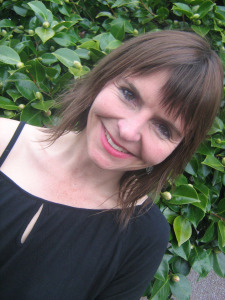
Sara Cassidy.
Sara Cassidy’s new YA novel SKYLARK (Orca Book Publishers, 2014) is her fifth book for youth. Sara is currently writing the last pages of a collection of short stories for adults. Sara lives in Victoria, BC and at www.saracassidywriter.com.





March 8, 2014
International Women’s Week: Guest Post from Rebecca Petruck: On Choices
In my twenties, I worked a trade show in Abu Dhabi, where I was caught off guard when about one-third of the men would not interact with me. We engaged in a masque in which they asked my male coworker a question, I answered (in front of these men), my male coworker repeated my answer, and so on. Looking back, I see there was no antagonism—it was simply not for these men to directly interact with a woman—but for me the experience was a shocker. I returned home a more conscious feminist, determined never to take for granted the rights I had as an American woman, and to support other women as much as I could.
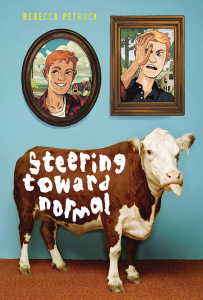
Amulet Books, May 2014
So why did I write a book almost entirely about boys and men? In my debut novel, mothers are absent, and other females have minor roles. Even after I learned how many girls raise and compete steers—and win—STEERING TOWARD NORMAL was always about boys. Considering my genuine concern for young women in today’s society, I can’t help but wonder why.
My mom wasn’t absent. She made me crazy a lot of the time because I’m a daughter and she’s my mom and I think that’s how it goes for a lot of us. But she also gave me a sense I couldn’t complain if I never tried to reach for what I wanted. Because of that sensibility, I’ve achieved a lifelong dream to be a published author.
I have a sister who is accomplished, well-travelled, and intelligent. I have been mentored by amazing women throughout every stage of my life. I have women friends who inspire and encourage me daily. I could say the boy-oriented book is because there is a need for middle grade “boy” books, and many would agree that’s true. But I know that’s not the whole truth of why I wrote STEERING TOWARD NORMAL. So why, really, a book about boys and men?
Personally, I love the research element of writing a novel. Every project I’ve worked on has a heavy research component. So is the reason I wrote about boys really as simple as I was trying to research them, too, to finally figure them out?
As a 40-year-old woman, it is unnerving to think I am still trying to figure out men. I was addicted to romance novels as a teen, and cute boys and the idea of falling in love could make me incoherent. I look back and wish I could tell my teen self to drop that romance novel and focus on my dreams for myself, not on how to make some boy like me. I think of all the energy I spent on boys, even though most of them were very nice, and wish I could re-spend it on efforts that might have helped me and other women I care about.
It is a judgmental place to live. It judges my younger self for a journey she had to take, and it judges girls and women who are on the same journey now. Because, like it or not, much of our lives are lived in comparison. We compare ourselves to men, to other women, to people of other races, of other lifestyles, of other incomes, politics, education. We compare ourselves to people in the news, in magazines, and in books.
I’m not convinced that comparison is necessarily a bad thing. Though many say one of the most important journeys I’ll take is to learn to not compare myself with anyone else and to accept who I am, there are so many amazing people out there who have inspired me to strive. Perhaps comparison is not a good word. I learned about the kind of person I wanted to be from people I’ve known personally, from others I’ll never meet, and from many of the heroes I read in stories, both male and female.
STEERING TOWARD NORMAL centers around the idea of choice—the family we’re born to and the family we make for ourselves in the people we gather around us. Do I think this kind of choice is less of a struggle for women because our natures make us more communal, more gatherers of friends who become our family? Do I have a bias that men struggle with familial connections because their natures are more solitary? I have been mentored and encouraged by as many men as women. I know many men who are wonderful fathers, brothers, and friends. Maybe it’s not about stereotypes and biases anymore. Maybe it’s just about life being a difficult journey for all of us and the need to be kind.
Though I wrote about boys and men, what I’ve discovered is the true reason I wrote STEERING TOWARD NORMAL was to explore how good kids face crappy situations. My main character could have been a girl as easily as a boy, and I hope both genders will find inspiration and positive comparison in deciding what kind of people they want to be in the world, too.
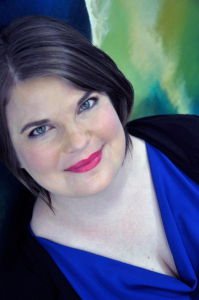
Rebecca Petruck. (Photo by Addie Alexandra Wuensch.)
Rebecca Petruck is a Minnesota girl, though she currently lives in North Carolina, where she earned her MFA in creative writing. A former member of 4-H, she was also a Girl Scout and competed in MATHCOUNTS. She may have pulled a few pranks in her life, though no one can prove she wrapped that entire car in cellophane. This is Rebecca’s first novel.









